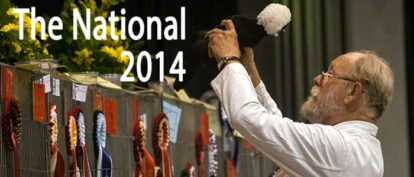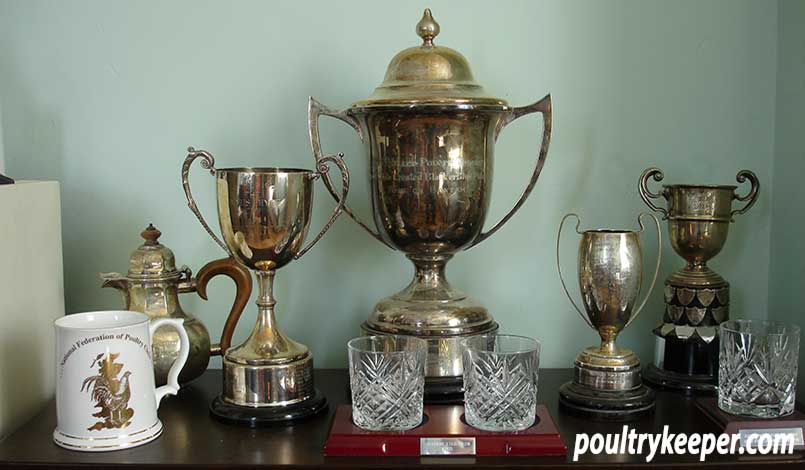
Laurence has a lot of exhibiting show chickens and judging them, right up to the National level. This article provides some excellent tips for showing chickens to newcomers wanting to show their poultry.
Showing chickens is a popular hobby that all the family can enjoy, and all shows have prizes for junior keepers, and many will have a ‘best ladies exhibit’ section. All exhibits will be pure breeds of a type recognised by the Poultry Society of Great Britain. It is the points allocated for each feature that decide the quality of the bird, and ultimately it’s placing.
Sometimes, you may find that a local show will have a general section for children to enter a hybrid, but this is not usually the norm. Shows are run to strict guidelines, and judges are chosen a year in advance and will either be qualified to Poultry Club standards or an expert in their chosen breed.
Here are 15 tips and tricks for exhibiting show chickens:
#1: Know your judges
It is worth knowing your judges, as even though they deny it, they do have preferences, and a bird not placed by one judge will be on Championship Row when judged by another. It is often about when not to show if you know a judge dislikes a certain ‘type’. It may be worth entering two birds; one you believe to be your best and one you think the judge may like.
Anyone interested in exhibiting chickens should do their homework well in advance by going along to a local show to see the standard of birds on display and talk to the exhibitors and judges who will be more than willing to advise if you make it clear that you want. Pay attention to the type and quality of the birds winning.
#2: Start small and network
A small local show is a good place to start exhibiting show chickens – it will ease you in gently before getting to the larger and far more difficult (and bureaucratic) exhibitions. It is more likely that you will get a placing, and if the show is reported in the poultry press, your name will start to become visible.
Do not assume, however, that you will win anything. My first show was a resounding failure, but it was the opportunity to ask questions and learn the ropes before the next show, where I got a 4th!
Demonstrate your enthusiasm and an experienced exhibitor may take you under their wing and teach you all that you will need to know. Network!!
#3: Standards
Read as much as you can and invest in a copy of the British Poultry Standards for reference.
#4: Diet
Feed your birds correctly as it is essential, and we should feed them with a good quality chick crumb, growers’ pellets and layers’ (or breeder) pellets at the appropriate stages of their growth.
Any birds that are lagging in the growth stakes can be encouraged to do better by increasing light artificially for about 4 weeks before the show date.
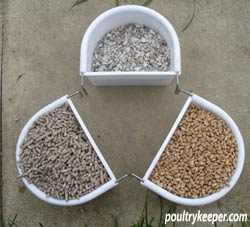
Feeding chickens provides further information on how to provide the correct diet for your birds.
#5: Separate the sexes
Separate birds once the sexes can be identified as bullying and feather pecking can occur as the youngsters vie with each other to establish their pecking order; also, when birds reach sexual maturity, the cockerels will attempt to mate the hens and damage the feathers.
#6: Housing indoors
Keep your show birds indoors – sunlight and the other elements will make bright feathers dull, and grass may stain them. White birds are challenging to clean once they have been grass reared. Also, it has been suggested that a white bird may develop a yellow tinge to the feathers from eating grass and other plants such as marigold.
If your bird is not ‘match fit’, do not show it – you will do more harm than good; it is better to take a perfect bird to the next show. By knowing your breed, you will have a good idea of how long they take to mature and, therefore, the period you need to reach peak fitness and appearance before your showtime. Males will stay in condition longer than females, who will become drained by the rigours of laying.
Good husbandry is essential:
Serious show preparation starts a year before the exhibition date with the breeding stock and growing-on of the chicks, which is hugely exciting as you watch them develop and begin to see the best specimens standing out from the others. By attending shows the year before, you will get an idea of the timetable that you need to work to, and when is the optimum time to hatch. Remember that larger breeds take longer to mature than smaller breeds and males may take longer still.
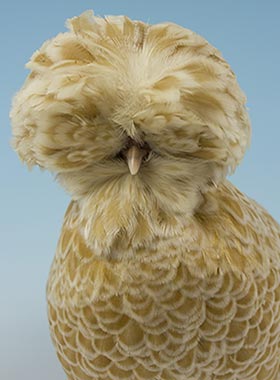
#7: Delay laying
Keeping pullets and hens on whole wheat only, effectively reducing nutrient content, will often delay laying until after the show. Laying can also be delayed by moving the birds from pen to pen, unsettling them and halting the desire to nest.
Preparation is the icing on the cake for exhibiting show chickens!
Without through preparation of both your bird and yourself before the show, you may walk away disappointed, despite your efforts to get the perfect bird.
It is often the smallest of things that let the exhibitor down when there are two birds of equal quality vying for first place; the judge will pick the one which has been better presented. However, a beautifully prepared bird exhibiting serious faults will never win; you need to have good stock in the first place – you can’t polish a turd!
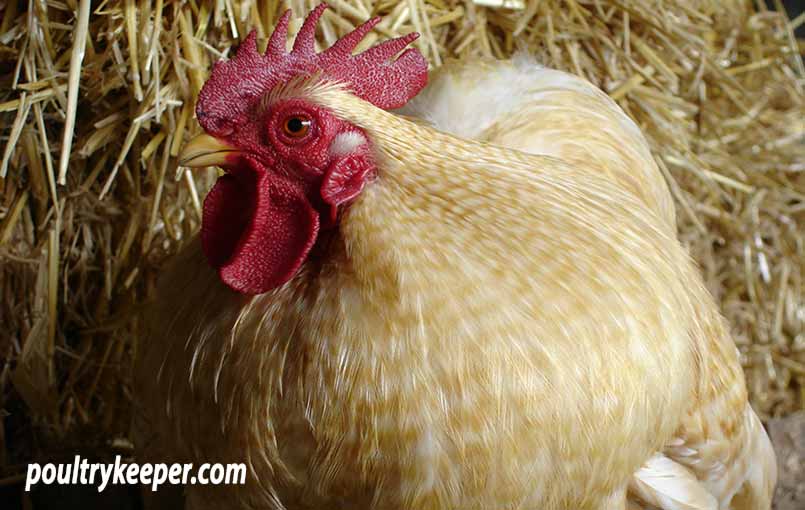
#8: Pen training and handling
Train your exhibit appropriately; it will be sitting in a small cage for hours, surrounded by people looking at it, poking it and generally making a noise.
Pen training (as it is also referred to) basically means confining the bird to a show pen or similar space such as a rabbit hutch for a week or so before the show. It is beneficial to place this where there is human activity as this will prepare them for the hustle and bustle of a show; some breeders place the cage on the floor where, if you have one, a dog provides a very active distraction (ensure though that the dog cannot get at your bird).
The potential exhibit needs to be used to this limited space before attending a show as if a bird is taken directly from a large pen and placed in a show pen for the first time; it may become distressed and continuously fly upwards in the pen as it tries to escape, which is both annoying to the exhibitors and alarming to the other birds and may result in a disqualification as nothing annoys a judge more than an ill-trained specimen.
Once the bird has been pen trained, it is important to handle it regularly by removing it from the pen and examining it as a judge would, for example, opening up its wings, holding it up to your face and moving the head back and forth and walking around with the bird in your hands, if you have one, a judging pointer (similar to extendable magnets is a useful tool to poke into the chicken’s cage now and then.
#9: Beak and claw trimming
Once you have selected and trained your bird(s) for a show, make sure that the beak and claws are regularly trimmed, making sure you avoid the quick as this will bleed profusely in both claw and beak. Dog nail clippers or toenail clippers work very well. Oil the legs too to keep the scales supple and prevent a build-up of crust.
#10: Washing chickens for the show
Before the show, you will need to wash and prepare your bird according to breed; silkies should be washed as near to the time as possible, flat feathered birds a couple of days before allowing the feathers to settle.
However, some birds (Particularly hard feather) are spoiled by washing and will need a more long-term plan to keep them clean and a rub down with a silk cloth on the day; if in doubt, visit another show beforehand and speak to other exhibitors. When washing your bird, remember:
- Never leave a bird alone, either in the water or on the side of the sink.
- Do not stress the bird as you wash, if the bird becomes panicked, stop for a little while.
- Talk to the bird as you wash as it will make it and you feel much better.
- Dry the bird slowly (it may take all day) so leave yourself plenty of time.
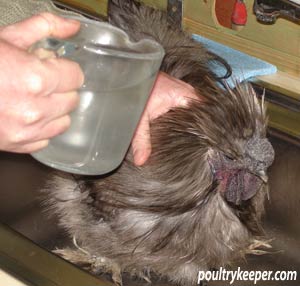
Do not modify the bird in any way by, amongst other things, plucking out or dyeing feathers, glueing in extra feathers, or darkening combs with boot polish; a good judge will spot any attempt at faking and disqualify the bird.
It is important to keep your birds free from lice and mites as the last thing a judge wants is to be crawling with parasites, and they will spread quickly to neighbouring exhibits.
#11: Entry forms for exhibiting show chickens
All shows have a closing date, and you must enter your birds before the deadline. Show dates are published in various poultry magazines and local press and will have details of the show secretary whom you should contact for a schedule which will list the classes available. Pick the class that you wish to enter your bird, making sure that it is appropriate, i.e. correct breed, size, age and sex, and pay the necessary fee.
Double-check your entries and take a copy of the form. Confirmation is usually sent before the show with details of classes entered and when you attend the show your pen numbers will be available from the show secretary, with the slips of paper often set out on a table at the entrance to the show area.
#12: The night before the show
It will help to have a checklist the night before and keep your birds penned inside with their carry boxes ready and labelled with class and pen number if you have it. Remember to pack drinkers, feed hoppers, cloth and cotton buds, wet wipes and kitchen rolls, and invest in some small padlocks if you intend to leave the showing area for any length of time as thefts occur.
#13: Penning and final presentation
On the day of your show, make sure your birds are penned 30 -60 minutes before judging starts (which will be advised in the schedule). This will allow them to settle.
Once having found your showing pens, sponge off any face dirt with a makeup sponge, and apply a little oil or petroleum jelly to the legs and wattles to spruce them up, ensuring that it does not soil the feathers.
Birds are not normally fed or watered until judging has finished, as judges can see this as ‘marking your exhibit’ that makes it known to a judge that it is your bird and perhaps influencing the decision.
At some shows, water containers are supplied, but it is advisable to take your own along with a freshwater container just in case, and recent legislation says that you must provide your bird with water.
When showing certain crested breeds, it is important to have the correct water container to prevent the crest or muffling from getting wet. You can prevent this by using a small container or placing tape halfway across a larger container to limit access to the water.
Keep an eye on overzealous stewards who may attempt to water your exhibit at a crucial point and ruin the feathers!
Check your bird regularly before judging starts and remove any droppings to prevent soiling.
#14: Feedback from the judge
After judging has taken place there is sometimes the possibility to speak to the judge to discuss the merits (and faults) of your birds, and this is invaluable and well worth the effort; difficult as it may be, try not to take any criticism to heart as the Standards that the judges use are there for a purpose, and all the advice you can get will ensure you learn and improve.
#15: Quarantine
When your birds have returned home it is a sensible precaution to apply some form of flea spray/powder. Show birds should be kept separate from other stock for a couple of weeks to ensure nothing contagious has been picked up.
Enjoy yourself – if you get stressed or frustrated or angry, then showing is not for you, it has to be fun. Now off you go and show those chooks!!!!


